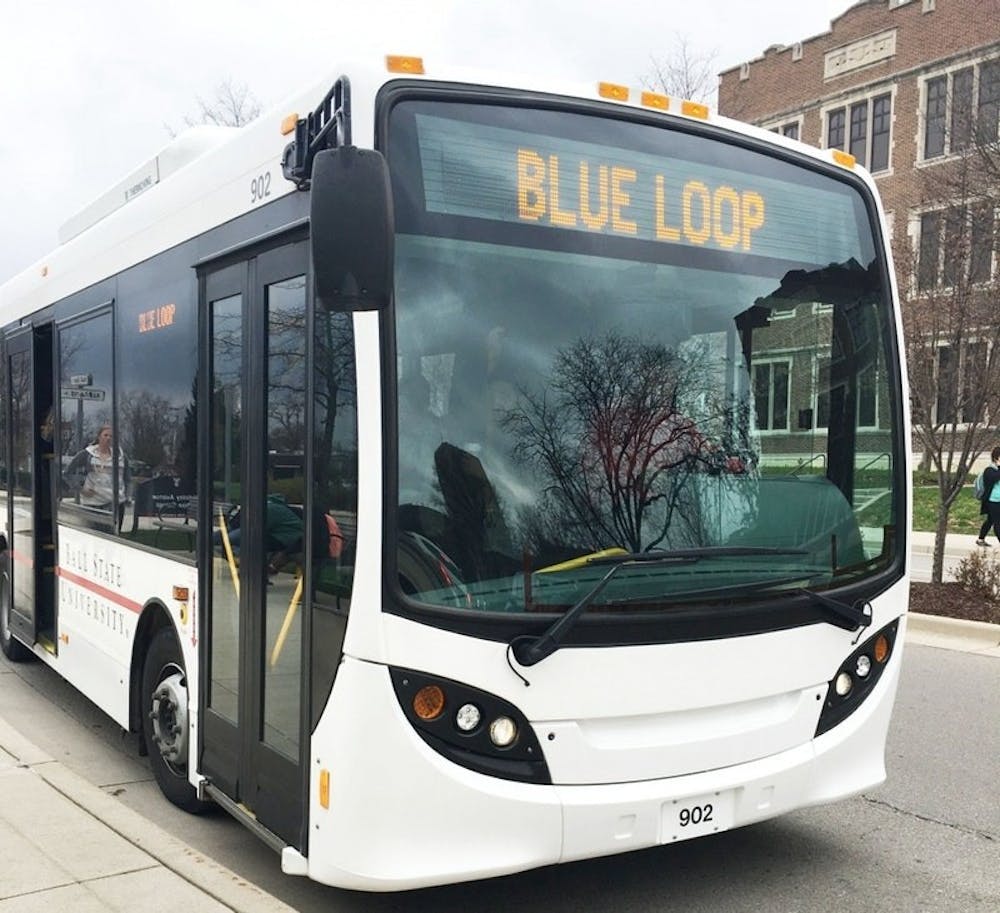Ball State University is one of the few college campuses that does not prevent underclassmen from having cars on campus, regardless of graduating class.
Despite the option for all to have a car on campus, it is not a feasible reality for everyone.
According to a 2016 U.S. News & World Report, 48 percent of students have a car on campus — enforcing the belief that on-campus transportation offered by colleges and universities is still valued among student populations seeking higher education.
Anthony Schuette, a research associate at Trellis Strategies, briefed in a July 2023 study that a lack of adequate transportation posed a barrier to many students obtaining higher education.
Using evidence from the 2022 Trellis Company Student Financial Wellness Survey, Schuette found that students who can’t reliably commute to their college campus “stand to fall behind in school or drop out altogether.”
Schuette said college campuses have a responsibility to ensure their students have a safe way to attend class. Ensuring such is “crucial to both helping keep higher education affordable and accessible and making sustainable transportation decisions at a campus-wide level,” Schuette said.
College is a period of transition involving many questions for every student, the least of which is, “How will I get to class on time?”
Understanding this, Ball State offers four different bus routes that travel throughout campus: the red, green, blue and purple loop. All loops follow an independent schedule, with variations between weekdays and weekends. Information for the schedules can be found online through Ball State Transportation Services.
Students can wait at corresponding bus stops found across campus. The shuttle service is available at no cost and with no ID required for Ball State students, according to the university’s Transportation Services webpage.
Although there is a schedule in place for each corresponding campus bus loop there is no longer a way to track the buses while they’re in use.
Students used to be able to monitor routes via the TransLoc app, an app that monitors bus transit stops and services within a certain area, according to the company’s website.
But, with the increase in shuttles and loops offered throughout Ball State’s campus, the app is believed to no longer be necessary, according to an Aug. 23 press release from Ball State’s Communication Center.
“TransLoc will no longer be offered in order to meet the growing need of additional shuttles and loops to better serve the transportation needs of students,” according the press release.
Reagan Helmholz, a third-year vocal music education student, disagreed with the university’s decision to revoke students’ accessibility to the TransLoc app calling it “not in the best interests of students.”
“I use the app when I am going far distances, need to be somewhere fast or when the weather is nasty,” Helmholz said. “I have already struggled this semester to get to events on campus that are far from where I live.”
She isn’t just frustrated for herself. Helmholz is concerned for international students, students who do not use English as a first language, and students who are new to or otherwise unfamiliar with Ball State’s campus and the surrounding Muncie community.
She said the inability to track campus buses via the TransLoc app has resulted in herself and many other students resorting to the Muncie Indiana Transit System (MITS) Bus as their preferred mode of transportation.
Helmholz, who lives at a university apartment complex, said it took her a while to learn her route home from class because only certain bus loops visit certain apartment complexes. To learn the most efficient way to get to and from class, she used the TransLoc app.
Students no longer have that option.
“This is one of the many ways Ball State continues to cut costs, and instead of saving some money on a useful app, they choose to spend this money in other areas,” she said.
Though campus bus shuttles only operate on weekdays, the university also offers Charlie’s Charter. This shuttle service is offered Sunday-Thursday from 6 p.m. to 1:30 a.m. as a safe transportation alternative once campus buses stop running at 11 p.m., according to the Ball State Office of Parking Services website.
Students can request a ride via (765) 760-7433.
Ball State is one of the leading accessibility institutions in Indiana. In 2023, the university was ranked in the top 10 of “wheelchair-friendly colleges” in the Wheels on Campus edition of New Mobility magazine.
Keeping with the title, the university has an on-demand shuttle available to students with disabilities who are registered with Ball State’s Office of Disability Services (DS). To learn more or confirm eligibility, stop by their office in the student center, call (765) 285-5293 or email dsd@bsu.edu.
Apart from traditional campus routes, the Muncie community is also home to the MITS bus system.
The bus system offers accommodating services to those with disabilities called the MITS Plus program. This is another on-demand shuttle service, similar to the one offered by Ball State. Students with disabilities looking to tour the city of Muncie can also register for the MITS Plus program through DS.
“While transportation may pose a barrier to higher education, school policy can have a drastic impact on alleviating student transportation problems,” Schuette said. “Making other forms of transportation, beyond personal vehicles, easily accessible for students is the most direct way to incentivize their usage.”
Although there seems to be options in place for every student, many students do not know what those options are due to the elimination of TransLoc.
“Ball State needs to take a step back and look at how these decisions affect all their students, faculty and staff instead of how much money they are saving on things that may not fully affect them,” Helmholz said.
Contact Meghan Braddy and Katherine Hill via email at meghan.braddy@bsu.edu or katherine.hill@bsu.edu.





